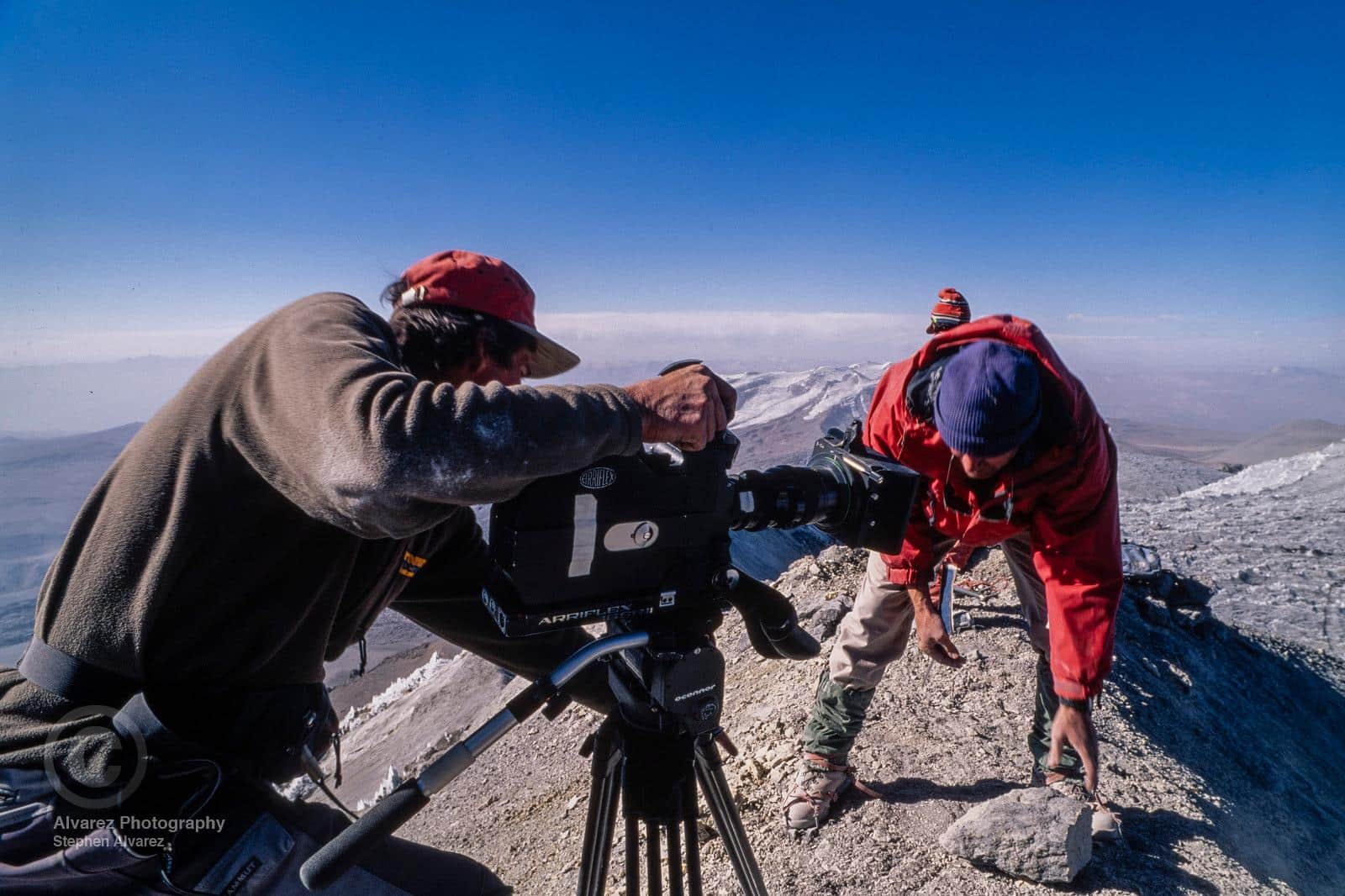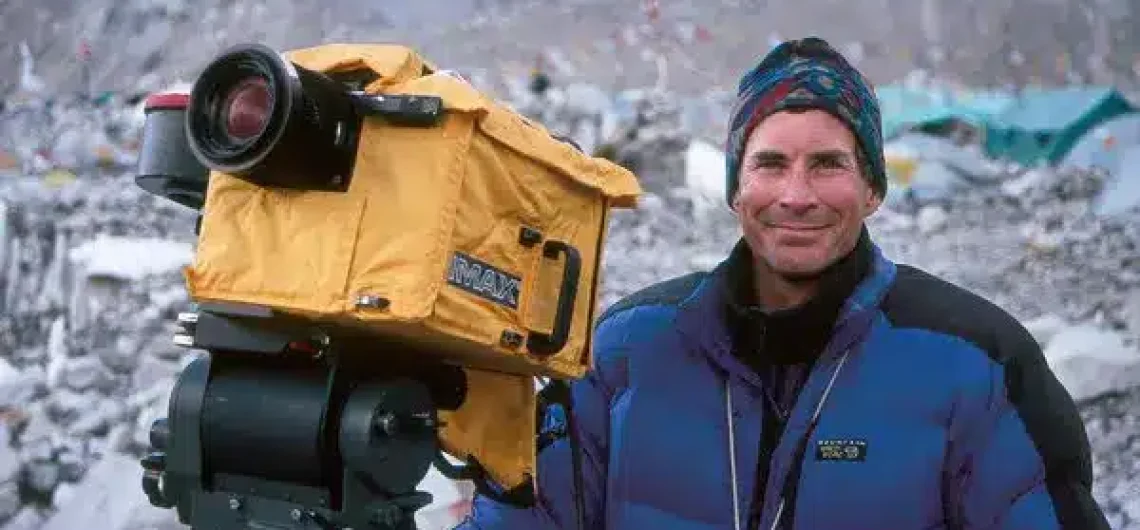David Breashears, an accomplished mountain climber and cinematographer who risked his life on Mount Everest, has produced the highest-grossing IMAX documentary of all time. Known for his meticulous attention to detail and willingness to take enormous risks, Breashears climbed Everest five times and captured the first live footage ever broadcast from the summit. In 1996, he and his team carried a specially built IMAX camera and numerous rolls of film to the top of the mountain, despite facing a deadly blizzard. Tragically, eight climbers, including a journalist and a New Zealand climber, lost their lives in the disaster. However, Breashears continued to document the expedition and complete his film, which was narrated by Liam Neeson and released in 1998. The documentary, titled “Everest,” earned over $128 million worldwide. Breashears, who was 68 at the time of his death on March 14, 2024, in Marblehead, Massachusetts, is survived by his son, Finn Clark, his sister, Lisa Breashears, and his brother, Steve Breashears. He will be remembered as an inspiring and legendary figure in the world of climbing and filmmaking.

Achievements
- First Live Pictures from Everest: David Breashears transmitted the first live pictures from the summit of Mount Everest in 1983.
- Multiple Summits of Everest: In 1985, Breashears became the first American to reach the summit of Mount Everest more than once. He made a total of eight expeditions to Everest, reaching the summit five times.
- Guiding Richard Bass: In 1985, Breashears guided Richard Bass to the summit of Everest, enabling Bass to complete the first-ever ascent of the Seven Summits.
- Climbing Achievements: Breashears climbed to the summit of Ama Dablam (24,494 ft / 7,466 m) in the Himalayas and completed challenging rock climbs in Colorado, including the free ascent of the Perilous Journey route on Eldorado Mountain in 1975.
- Film Work: Breashears worked on feature films such as “Cliffhanger” (1993) and “Seven Years in Tibet” (1997), as well as documentaries like “Red Flag over Tibet.” He received four Emmy awards for cinematography.
- IMAX Films: He directed, starred in, and produced the acclaimed IMAX film “Everest” (1998) and made the film “Kilimanjaro: To the Roof of Africa” (2002).
- Documentaries: Breashears produced the documentary “Storm Over Everest” (2008), featuring photography on the mountain and interviews with survivors of the 1996 storm. He also documented his personal reactions to climbing Everest again in the “Epilogue to the 1996 Everest disaster.”
David Breashears co-directed and co-produced an IMAX documentary about climbing Mount Everest in 1998. His business boss confirmed the death on Saturday. He was 68 years old.
On Thursday, Breashears’s body was found at his home in Marblehead, Massachusetts, with no signs of life. His death was normal, she said, but “the exact cause of death remains unknown at this time.”
His family said that Breashears climbed to the top of Mount Everest five times, including in 1996 with an IMAX camera.
The family said in a written statement, “He turned his love of climbing and photography into one of the most admired adventure filmmakers in the world.”
Breashears started GlacierWorks in 2007. The group’s Facebook page says it is a non-profit that “showcases changes to Himalayan glaciers through art, science, and adventure.”
His family said, “With GlacierWorks, he used his climbing and photography skills to make unique records that show the dramatic effects of climate change on the historic mountain range.”
His website says that in 1983, Breashears sent the first live TV shots from the top of Everest. It also says that in 1985, he became the first person from the United States to reach the top of Everest twice.
When the blizzard hit Everest on May 10, 1996, Breashears and his crew were shooting a documentary about the mountain. Eight climbers were killed. He and his crew quit filming to help the climbers.
David Breashears was the first climber from the United States to reach the top of Everest more than once. In 1987, he led the first commercial guided trip to the peak, and he has now reached the top of the mountain five times. But it wasn’t until 2007—when he began writing about how rising temperatures were affecting the world’s mountains—that he found his true calling. This is the work he would most like to be known for, according to his sister.
That year, while making a movie in Solukhumbhu for the US network PBS, Breashears took the first picture of the North Face of Everest. It was taken in the same place, at the same time of day, and in the same season as the first picture of glacier and mountain, which was taken by British explorer George Mallory 90 years earlier.
By putting his exact copy of the first picture on top of the original, he saw how much ice had already been lost over the past hundred years. Much of Everest’s ice cap was already gone all those years ago, and the major glacier had shrunk a lot.
He told the Nepali Times in 2013: “This is when I realized how bad climate change was getting for the mountains, and I wanted to start a conversation about what is going on in the Himalayas.”
He began to spend his whole life taking pictures of these changes, both the ones from Mallory’s collection at the Royal Geographical Society in London and the ones of Imja Glacier taken by Erwin Schneiders in the 1950s.
“Deep down, when I see this landscape, I think there is a problem, and I think people should know about it,” he told Lisa Choegyal, an author, editor, and close friend who served on the board of GlacierWorks, Breaks’s climate communications group.
“He was way ahead of his time when he used powerful, groundbreaking images of melting glaciers and touch screens to bring the world’s attention to how threatened our planet is,” she said at a tribute in Kathmandu last month.
Breashears was one of many mountain climbers who have seen firsthand how much ice and snow are melting in the Earth’s frozen regions.
“Those of us who have climbed Everest in the last 33 years have seen how things have changed,” he told the Nepali Times in 2013. “The path from the South Summit to the Hillary Step was mostly made up of snow climbs.” With our crampons, we can now scrape and scratch across the bare rock; the snow arête is gone.
![]()


Comments